14 Amazing Facts about Sea Otters for kids
The sea otter is a marine mammal that is found along the coasts of the northern Pacific Ocean, from Japan to Alaska and down to California. They are the smallest marine mammals in the world and are well-known for their cute and playful appearance.
Sea otters have a thick, waterproof coat of fur that keeps them warm in the cold ocean water. They can hold their breath for up to five minutes when diving for food and are outstanding swimmers. They primarily eat sea urchins, clams, crabs, and other small marine animals.
Sea otters are an important part of their ecosystem, as they help to control the populations of their prey species.
Unfortunately, sea otters have faced significant declines due to overhunting for their fur, habitat loss, and pollution.
Conservation efforts have helped to increase their populations in some areas, but they remain an endangered species.
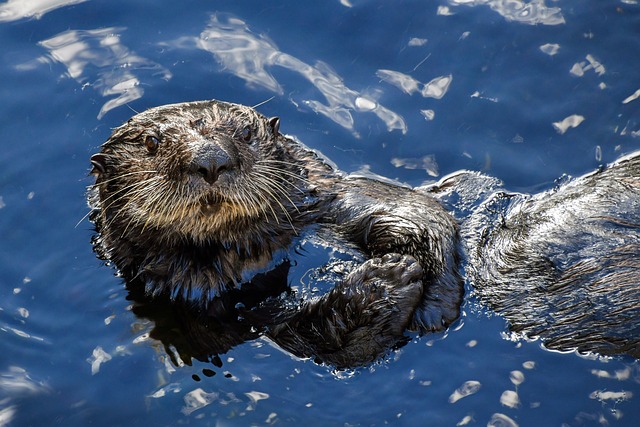
Basic Sea Otter Facts
Name :
The scientific name of the sea otter is Enhydra lutris.
Scientific Classification
The Sea Otter’s scientific classification is as follows:
| Kingdom | Animalia |
| Phylum | Chordata |
| Class | Mammalia |
| Order | Carnivora |
| Family | Mustelidae |
| Genus | Enhydra |
| Species | lutris |
Latin Name
The Latin name of the sea otter is Enhydra lutris.
Appearance (physical characteristics)
Sea otters have a unique physical appearance that distinguishes them from other marine mammals.
They have incredibly dense and dark brown fur, which is the densest of any mammal and provides excellent insulation in cold water.
Their webbed feet make them excellent swimmers, and their hind feet are specially adapted for grooming.
With their small eyes, ears, broad snout, and short, stout legs, they can grow up to 4 feet long and weigh up to 100 pounds.
They have an endearing and inquisitive personalities, making them a delight to observe in their natural habitat.
Size and Weight
Sea otters are small in size compared to other marine mammals, but they possess remarkable physical abilities.
They typically measure up to 4 feet in length and weigh between 30 and 100 pounds, with males being slightly larger.
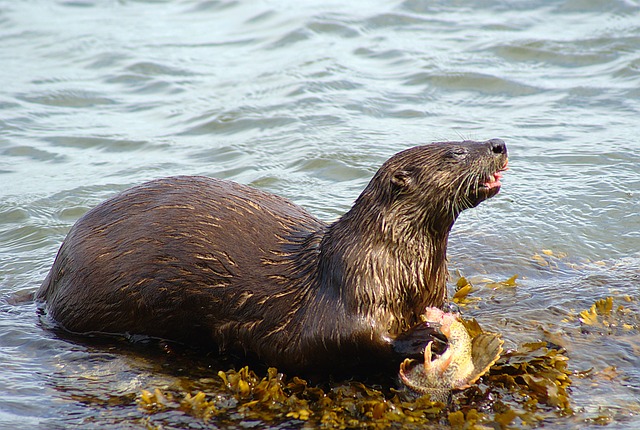
Their streamlined body shape, webbed feet, and short legs make them excellent swimmers.
Despite their small size, sea otters have incredibly dense fur, which can provide insulation from cold water. As a result, they have up to a million hairs per square inch.
Although they are not large marine mammals, they are an intriguing and charismatic species that can captivate anyone who observes them.
Habitat and Range
Sea otters are primarily found along the northern Pacific coasts, ranging from Japan to Alaska and extending southward to California.
They inhabit a variety of coastal environments, such as rocky shores, kelp forests, and estuaries.
Spending most of their time in the water, sea otters are known for floating on their backs while foraging for food or resting.
As keystone species in their ecosystem, they help control the populations of their prey, such as sea urchins and clams. However, habitat loss and overhunting for their fur have caused their populations to decline in some areas.
Despite this, conservation efforts have helped to increase their numbers in certain regions, emphasizing the importance of protecting their habitats for the continued survival of this species.
Diet
As carnivores, sea otters have a diverse diet that primarily consists of marine invertebrates like clams, crabs, abalone, and sea urchins.
They use their forepaws to locate and capture prey on the ocean floor and can also use rocks to break open shells.
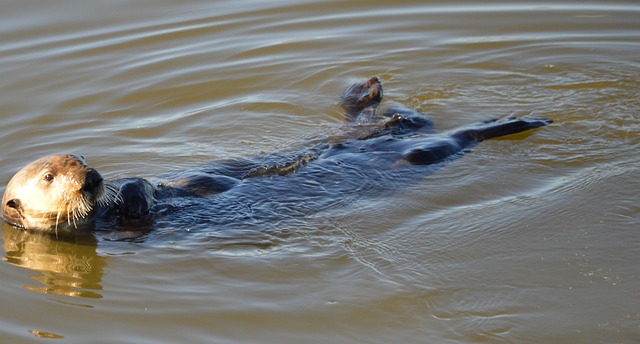
Due to their role as a keystone species, sea otters help regulate the population of prey species, such as sea urchins, which can damage kelp forests if they become too numerous.
Although sea otters occasionally consume fish and small mammals like birds and rodents, these are not a significant portion of their diet.
Given their hearty appetites and expert hunting skills, sea otters play a crucial role in marine ecosystems and are intriguing and essential species.
Life Expectancy
The life expectancy of a sea otter varies depending on a range of factors, such as habitat, food availability, and disease prevalence.
In the wild, sea otters typically live for around 10-15 years, although some individuals can survive for up to 20 years.
However, factors such as oil spills, pollution, and habitat degradation can impact their survival and reduce their lifespan.
In captivity, sea otters have been known to live for up to 25 years due to access to a steady food supply, protection from predators, and medical care.
Overall, the life expectancy of sea otters is influenced by a combination of biological and environmental factors, and conservation efforts are critical to ensure their survival and longevity.
Fun facts about Sea Otter
1. “The Floating Otter”:
Sea otters are the only marine mammal that doesn’t have a layer of blubber to keep them warm.
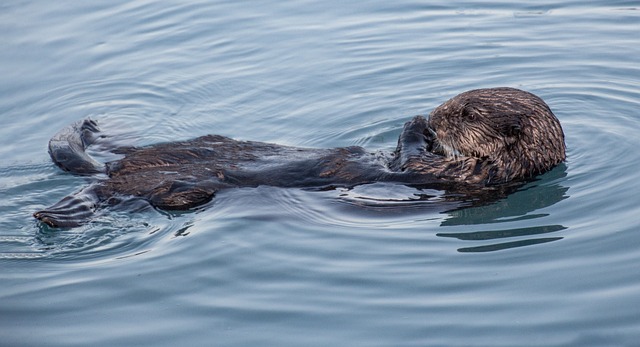
Instead, they rely on their dense, waterproof fur to trap air and insulate their bodies, allowing them to float on their backs for long periods.
2. “Superior Swimming Skills”:
Sea otters are excellent swimmers, capable of reaching speeds of up to 5.6 miles per hour.
They can hold their breath for up to 5 minutes and dive to depths of up to 330 feet.
3. “Furry Foodies”:
Sea otters have a high metabolism and must frequently eat to maintain their energy levels.
They consume around 25% of their body weight in food each day and have been observed using tools, such as rocks, to break open shells.
4. “Otterly Adorable”:
Sea otters are known for their cute and cuddly appearance, with their large eyes, round faces, and soft fur.
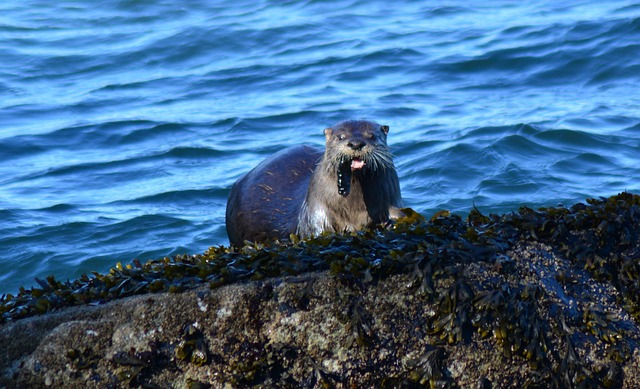
However, they are also known for their playful behaviour, often seen floating on their backs and playing with objects like shells or seaweed.
5. “A Mother’s Love”:
Female sea otters are incredibly nurturing mothers, carrying their pups on their chests and grooming them constantly to keep their fur clean and free of parasites.
They will even wrap their pups in seaweed to prevent them from floating away while they hunt.
6. “Keeping Warm in Cold Waters”:
To keep warm in the cold Pacific waters, sea otters have the densest fur of any mammal, with up to a million hairs per square inch.
This insulation is so effective that water never even touches their skin.
7. “Keystone Species”:
Sea otters play a vital role in their ecosystem as keystone species, helping to control the population of their prey, such as sea urchins.
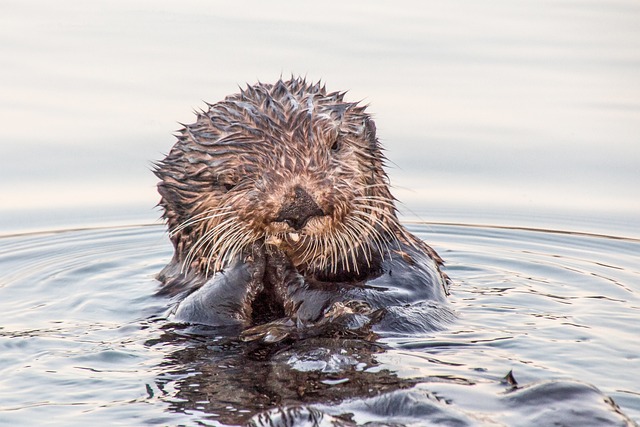
This helps keep the ecosystem’s general health by preventing overgrazing on kelp forests.
8. “Tool Users”:
Sea otters are known for using tools, such as rocks, to break open shells and other hard objects.
They will also use their forepaws to grasp and manipulate objects with great dexterity.
9. “Holding Hands”:
Sea otters are often seen holding hands while resting in groups to prevent themselves from drifting apart.
This behavior is called “rafting” and helps keep them safe from predators while they sleep.
10. “A Nose for Seafood”:
Sea otters have an excellent sense of smell, allowing them to detect prey in the murky waters where they live.
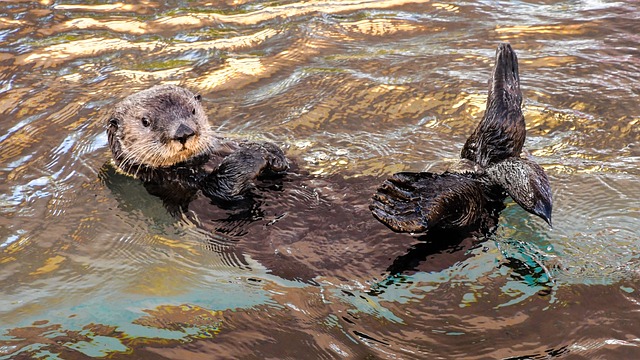
They also have sensitive whiskers, called vibrissae, that help them locate food by feeling for vibrations in the water.
11. “Ecosystem Engineers”:
Sea otters not only control the population of their prey but also have a significant impact on their habitat.
By eating sea urchins, they prevent overgrazing of kelp forests and help maintain healthy ecosystems.
12. “Chatty Otters”:
Sea otters are very vocal and communicate with a range of sounds, including whistles, chirps, and growls.
They also use body language, such as raising their heads or slapping their tails on the water, to convey messages.
13. “An Endangered Species”:
Sea otters were once hunted for their fur and nearly became extinct in the early 20th century.
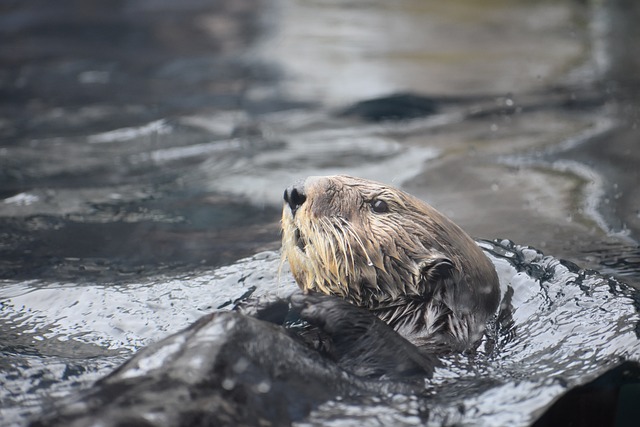
Although their populations have recovered in some areas, they have still considered endangered species due to habitat loss, pollution, and other threats.
14. “Powerful Chewers”:
Sea otters have strong jaws and teeth, capable of cracking open the tough shells of their prey.
They have been known to consume a variety of shellfish, including clams, mussels, and crabs.
Conclusion
In conclusion, sea otters are fascinating marine mammals that play a crucial role in their ecosystem.
Their cute and playful appearance has made them popular with humans, but unfortunately, they have been hunted and impacted by habitat loss and pollution.
Conservation efforts are ongoing to protect and increase their populations, and it is important to continue to work towards ensuring the survival of this important species for the health of our oceans.
